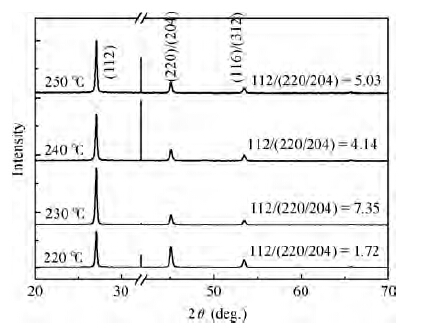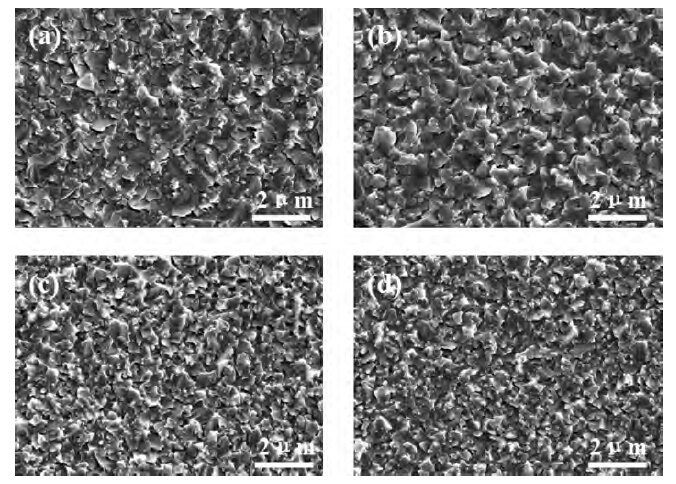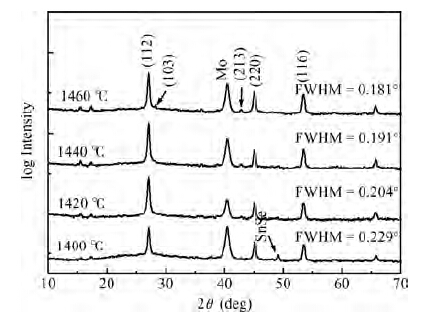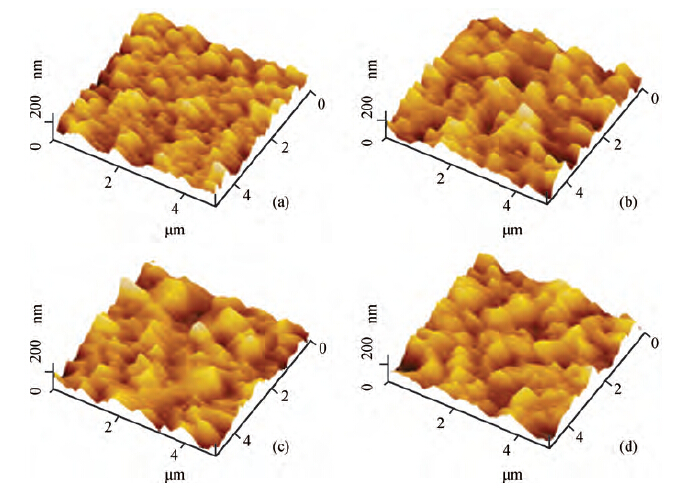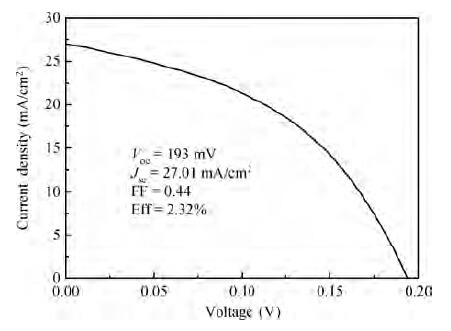| Citation: |
Ding Sun, Shengzhi Xu, Li Zhang, Ze Chen, Yang Ge, Ning Wang, Xuejiao Liang, Changchun Wei, Ying Zhao, Xiaodan Zhang. Influence of selenium evaporation temperature on the structure of Cu2ZnSnSe4 thin film deposited by a co-evaporation process[J]. Journal of Semiconductors, 2015, 36(4): 044009. doi: 10.1088/1674-4926/36/4/044009
****
D Sun, S Z Xu, L Zhang, Z Chen, Y Ge, N Wang, X J Liang, C C Wei, Y Zhao, X D Zhang. Influence of selenium evaporation temperature on the structure of Cu2ZnSnSe4 thin film deposited by a co-evaporation process[J]. J. Semicond., 2015, 36(4): 044009. doi: 10.1088/1674-4926/36/4/044009.
|
Influence of selenium evaporation temperature on the structure of Cu2ZnSnSe4 thin film deposited by a co-evaporation process
DOI: 10.1088/1674-4926/36/4/044009
More Information
-
Abstract
Cu2ZnSnSe4 (CZTSe) thin film solar cells have been fabricated using a one-step co-evaporation technique. The structural properties of polycrystalline CZTSe films deposited at different selenium evaporation temperatures (TSe) have been investigated using X-ray diffraction spectra, scanning electron microscopy, and atomic force microscopy. A relationship between TSe and the secondary phases deposited in the initial stage is established to explain the experimental observations. The Se flux is not necessarily increased too much to reduce Sn loss and the consumption of Se during fabrication could also be reduced. The best solar cell, with an efficiency of 2.32%, was obtained at a medium TSe of 230 ℃ (active area 0.34 cm2). -
References
[1] [2] [3] [4] [5] [6] [7] [8] [9] [10] [11] [12] [13] [14] [15] [16] [17] -
Proportional views





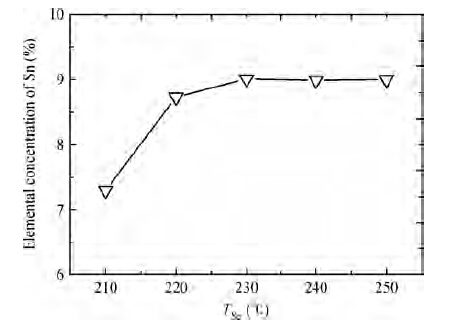
 DownLoad:
DownLoad:
